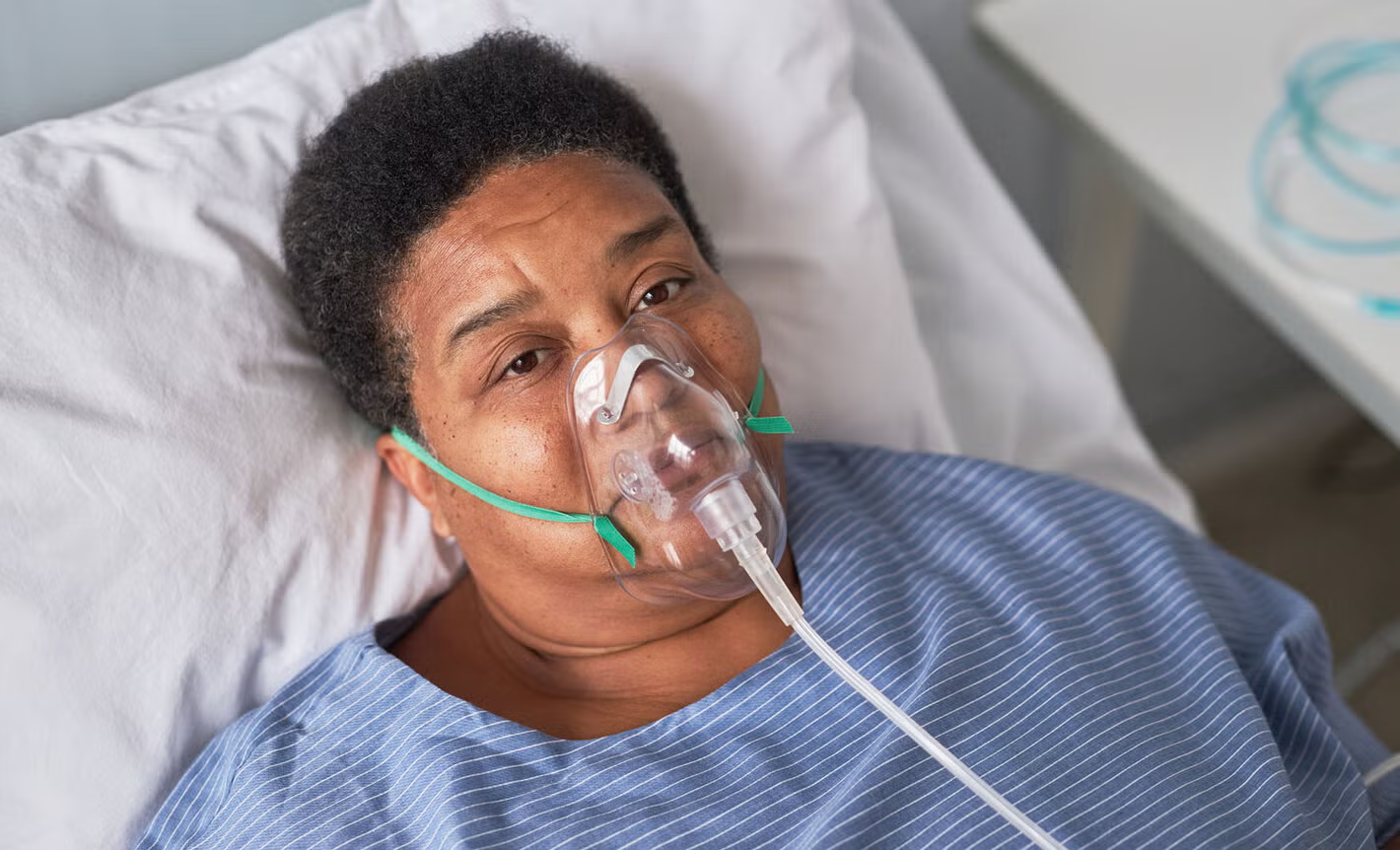What is Hypoxaemia?
Hypoxaemia means low oxygen concentration in the blood. It is diagnosed when oxygen saturation (SpO2) is below 90% on a pulse oximeter. This is a medical emergency that can lead to low oxygen supply to tissues (hypoxia) and death if untreated.
You can ask your own question to a licensed healthcare provider here for free. It may take up to 7 days to get an answer. If you want a consultation in minutes, book now with Hope+ our premium and best health consultation service in Uganda.
Causes of Hypoxaemia
- Surgical: head injury, chest trauma
- Medical: severe asthma, pneumonia, sepsis, shock, malaria, COVID-19, heart failure, cardiac arrest, airway obstruction, severe anaemia, pertussis, carbon monoxide poisoning
- Obstetric and perioperative: obstructed labour, ruptured uterus, pre-eclampsia/eclampsia, post-caesarean section
- Neonatal: birth asphyxia, transient tachypnoea, respiratory distress syndrome, neonatal septicaemia
Diagnosis
- Clinical assessment: history and physical signs such as fast or very slow breathing, difficulty breathing, inability to talk, confusion, convulsions
- Pulse oximetry: SpO2 < 90% indicates hypoxaemia
- Blood gas analysis: measures oxygen and carbon dioxide levels directly, but is invasive and costly
Clinical Signs to Watch For
- Rapid breathing above age-specific normal rates
- Nasal flaring, head nodding
- Chest indrawing (recession)
- Cyanosis (bluish skin)
- Weakness or prostration
- Reduced consciousness (Glasgow Coma Scale <10)
- Use of accessory muscles to breathe
Oxygen Therapy: When and How It Is Given
Indications:
- All patients with SpO2 < 90% or PaCO2 < 60 mmHg
- Patients with emergency signs like obstructed breathing, severe respiratory distress, cyanosis, convulsions, shock, coma
- Acute conditions like severe asthma, trauma, myocardial infarction, carbon monoxide poisoning
- Increased metabolic demand (burns, poisoning, infections)
Oxygen Delivery and Dosing:
| Age Group | Device | Flow Rate | FiO2 (%) |
|---|---|---|---|
| Neonates | Nasal cannula | 0.5 – 1 L/min | 25 – 40 |
| Infants (1m-1yr) | Nasal cannula | 1 – 2 L/min | |
| Preschool (1-3) | Nasal cannula | 1 – 4 L/min | |
| School Age (>4) | Nasal cannula | 1 – 6 L/min | |
| Adults | Face mask | 6 – 10 L/min | 40 – 60 |
| Adults | Face mask with reservoir bag | 10 – 15 L/min | 60 – 90 |
| Critical | High flow nasal cannula | 20 – 60 L/min | 100 |
| Mechanical Vent | Ventilator | 16 – 20 L/min |
- Mild to moderate illness starts at 3–5 L/min by nasal cannula
- Severe illness in older children and adults usually requires 10–15 L/min via face mask with reservoir bag
- Children under 5 needing >5 L/min oxygen are given CPAP
Escalation:
- Start with nasal prongs at 1-5 L/min
- If SpO2 remains below 90%, switch to simple face mask at 5-10 L/min
- If still below 90%, move to face mask with reservoir bag at 10-15 L/min
- If oxygen supply and equipment are available, use CPAP, BiPAP, or high flow nasal oxygen (HFNO)
Weaning Off Oxygen:
If oxygen saturation falls or respiratory distress worsens, increase oxygen flow to previous level
Flow rate decreased by 1-2 L/min once SpO2 is stable above 92%
Reassess after 15 minutes and again after 1 hour to ensure oxygen saturation remains adequate


